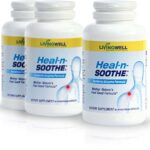The shoulder is actually the most mobile joint in the body, which is why it is supported by so much soft tissue, called the rotator cuff. These connect the shoulder blade and the shoulder joint both in the front and back, and pass under an arch of bone on either side.
Damage to the joint, muscles or tendons in the rotator cuff can cause inflammation that leads to a feeling of pain in the shoulder blade. It can also be caused by problems associated with the bursa (the liquid filled bag that lubricates the joint).
Rotator cuff tendonitis affects many people, up to 29% of the people who complain about pain in the shoulder. Together with pain as a result of problems with the bursa, they are responsible for most of the shoulder blade pain complaints.
Long term degeneration of the soft tissues in the rotator cuff, along with tears in the actual tissue that result from lack of treatment, can result in loss of movement in the arm. The pain is usually most severe at night. It is interesting to note that only 10% of cases of pain in the shoulder blade are because of trauma injury, such as lifting a very heavy object. The majority are cases are the result of years of overuse of the joint.
There are tell-tale signs that overuse and strain are causing the bony arch of the joint to improperly impinge on the soft tissue tendons and muscles surrounding it. The pain will start small, but be persistent. In effect, you are suffering from a case of tendonitis in the shoulder. You need to find a long term solution to reduce inflammation on a regular basis. Otherwise, the tendonitis could turn into a tear that becomes a permanent source of pain and loss of mobility.
Another cause of pain in the shoulder is due to calcific tendonits. In this case, calcium deposits are found in the tendons surrounding the rotator cuff, and is most common in women ages 30- 60 who have sedentary jobs. Once the calcium crystals move from the tendons to the bursa, pain in the shoulder can become intense. The shoulder will become tender, and the sufferer will tend to hold the arm close to the chest to avoid increased pain.
There are many other causes of pain in the shoulder blade, but the first thing you want to do if you are suffering is to reduce the inflammation. You can take NSAIDs (non-steroidal anti-inflammatory pills) and apply cold compresses to the area. Over the counter NSAIDs are best, such as those that contain ibuprofen, ketoprofen or aspirin (Aleve, Advil, Tylenol, Motrin, Panadol). For calcium deposits, you may have to wear a sling initially and try using ultrasound to break up the crystals and promote healing. Once you have gotten some relief, specific physical exercises can help prevent future pain and loss of movement by strengthening the rotator cuff. Physical therapy is another way .
Pain in the shoulder could have been caused by rotator cuff tendonitis, subacromial bursitis (inflammation of the bursa), calcific tendonitis and other conditions. Visit LosetheBackPain for more information on non-surgical pain relief solutions.



